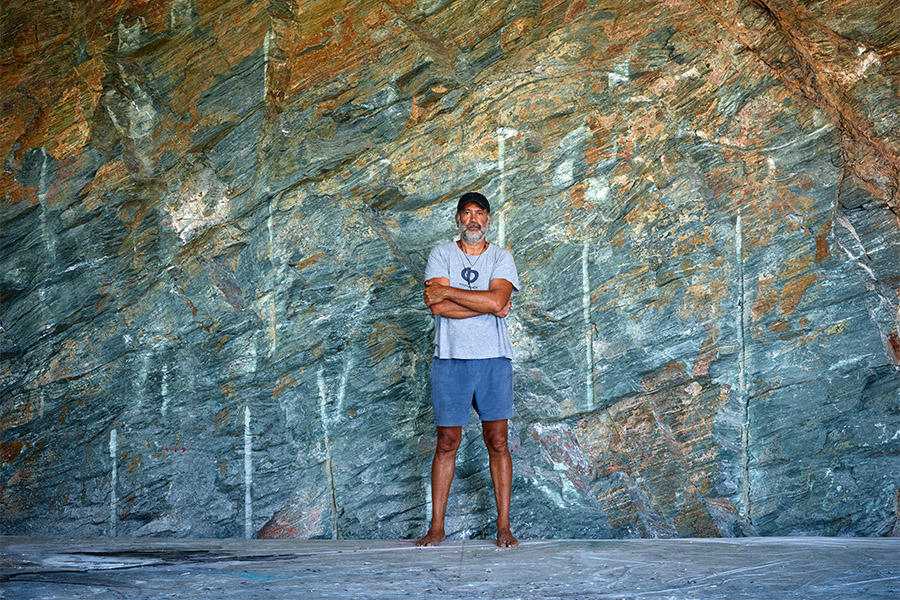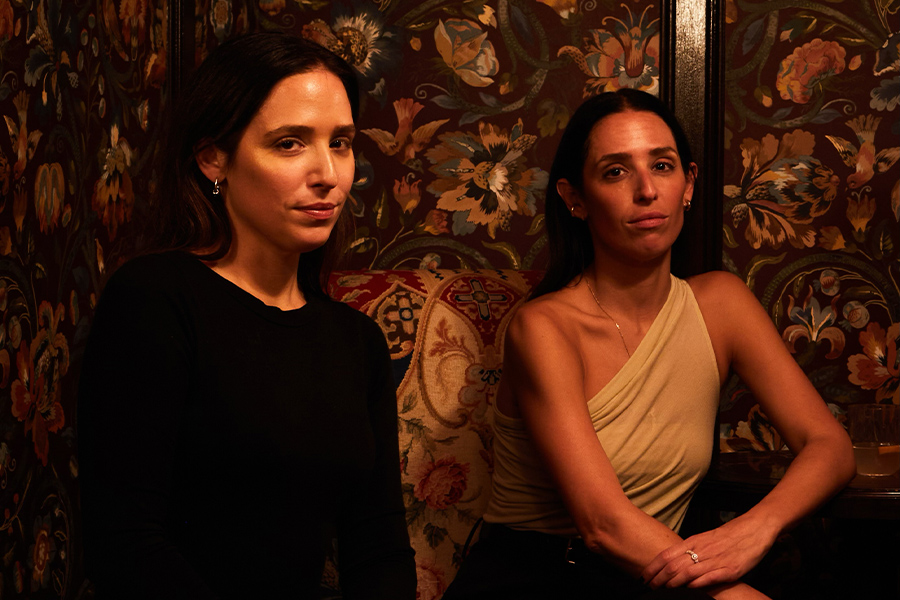From a watch collection with French luxury brand Hermès and a forthcoming chair collection with Knoll, to his first solo gallery exhibition in New York (scored with his original music) and an Afrofuturism-inspired pavilion representing members of the African diaspora for the 2021 London Design Biennale, there’s not much renowned Nigerian-American designer Ini Archibong can’t (or won’t) do. Here, the Switzerland-based Archibong sheds some light on his approach, how storytelling and mythology are woven into his pieces, and what’s on the horizon.
You’ve been incredibly busy: a solo gallery show, your forthcoming collection with Knoll, and your recent award-winning pavilion for the London Design Biennale.
Almost everything I do is currently represented somehow. I have the Pavilion of the African Diaspora [created with his design team at LMNO collective] representing my architectural skill works and monuments, the Knoll collection representing the contract industry for industrial design, and Friedman Benda representing the gallery and the art side. I also have the [Vernus 3 chandelier at the] Metropolitan Museum of Art. In the background of all that, I have an exciting collaboration that’s going to be announced in a couple of weeks. I am busy doing things in different areas all at the same time, and traveling and making music when I can.
Tell us more about your recent Hierophany exhibition with the Friedman Benda gallery.
The Friedman Benda show has 45 minutes of original music that I made while I was designing the collection. Each of the pieces has its own storyline and mythology attached. The best way to describe the overall show is to view each of the pieces the same way you would look at an artifact of an ancient future culture; something you know is a bit anachronistic but fits in this time [period]. Everything is made using traditional techniques. It’s supposed to point to mythology that explains what’s behind the pieces, but also the reason or the type of energy that comes off the pieces into the space they occupy.

Pieces in Archibong’s Hierophany exhibition at Friedman Benda tap into mythology, craftsmanship, and West African spirituality
That’s part of the reason why the music is so important. The entirety of the show isn’t the narrative. It’s an unspoken narrative. It’s a story about humanity’s place in the universe and the heroic potentiality within us as humans. It borrows pieces from religion, from different mythologies I’ve studied, and from what I know of my West African spirituality and animism and culture.
How does your process differ when you’re creating something like the Knoll series?
When working with brands, it’s personal in a different way. With gallery work, and especially doing a solo show, that’s like making an album. That’s a moment in time. If I want to make something that’s going to be successful and produced on a large scale, I need to tap into the part of me that exists beyond time—the things that I have in common with as many diverse people as possible to try to make a product that appeals to as many people as possible.
The technical process is much the same. I design things the way I design things. Something like an injection-molded chair that takes a heavy upfront investment and has a lot of parameters, there’s a ton of thinking that goes into it before I free myself to just create. Then there’s so much collaboration between me and the brand—in this case represented by Benjamin Pardo, who was the chief design officer when I was working with them. Then there’s the cultural legacy. Working with a brand like Knoll, you can’t just make a chair. It has to be a Knoll chair.

The Below the Heavens series for Sé includes the Helios Horizon tables, Athena lamp, and Circe sofa
How do you choose the brands you work with?
I made a list a decade ago, and I walk around knowing the brands that have a legacy I would like to be a part of. When I talk to students, I advise them to be brazen and say, ‘I want to work with Knoll. I want to work with Hermès. I want to work with the top of the top. Someday I’m going to work with Herman Miller.’
The Knoll chair is most similar to what I’ve done before with the Hermès watch. You have a brand with an intense history and legacy and an intent to continue for a long time, with a strong identity that needs to be combined with my own. That forces me to tap into the skillset that I learned at the ArtCenter College of Design in Pasadena, California, which is to be technical, brand focused, and design with a capital D. The education that I got in Switzerland doing the master’s of luxury at ECAL was more emotional sensitivity. [It’s about] all the things that go into luxury projects and products and bringing out the unspoken part of the brand’s essence.
What’s next for you?
The Pavilion of the African Diaspora is continuing—we’re going to be making stops again in New York and Miami—and adding more pieces to it. I’ve been working with some glass blowers in Murano, Italy. I look forward to more stuff coming from me and the glass masters there. The work that I did for Friedman Benda is being very well received, and that inspires me. I’ve already started working on the next pieces I’m going to be showing with them.

Archibong’s Pavilion of the African Diaspora, created with his team at LMNO collective, which first appeared at the 2021 London Design Biennale
This article originally appeared in HD’s 2021 Product Marketplace issue.
More from HD:
4 Wineries Usher in a New Era of Design
Monastero Arx Vivendi Maintains Its Old-World Charm
Designer Loren Daye Creates Spaces That Endure


